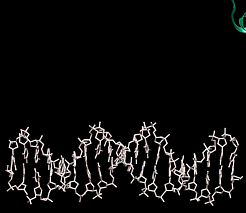
Posted on 05/16/2006 3:33:16 PM PDT by blam
Neanderthal yields nuclear DNA

Neanderthals died out about 29,000 years ago
The first sequences of nuclear DNA to be taken from a Neanderthal have been reported at a US science meeting. Geneticist Svante Paabo and his team say they isolated the long segments of genetic material from a 45,000-year-old Neanderthal fossil from Croatia.
The work should reveal how closely related the Neanderthal species was to modern humans, Homo sapiens.
Details were presented at a conference at New York's Cold Spring Harbor Laboratory and reported by News@Nature.
It is a significant advance on previous research that has extracted mitochondrial DNA (mtDNA) from Neanderthal (Homo neanderthalensis) specimens.
This genetic material is contained in structures that power cells; and although the information it holds is very useful, it is more limited in scope than the DNA bundled up at the cell's centre.
This nuclear DNA is what really drives an organism's biochemistry.
Divergent code
So far, Paabo and colleagues have managed to sequence around a million base-pairs, which comprises 0.03% of the Neanderthal's entire DNA "catalogue", or genome. Base-pairs are the simplest bonded chemical units which hold together the DNA double helix.
The genetic material comes from a 45,000-year-old male Neanderthal specimen found in Vindija Cave outside Zagreb, the News@Nature website reports.
DNA IN HUMAN CELLS

* The double-stranded DNA molecule is held together by chemical components called bases
* Adenine (A) bonds with thymine (T); cytosine (C) bonds with guanine (G)
* These "letters" form the "code of life". There are estimated to be about 2.9 billion base-pairs in the human genome wound into 24 distinct bundles, or chromosomes
* Written in the DNA are 20-25,000 genes, which human cells use as starting templates to make proteins. These sophisticated molecules build and maintain our bodies
* Preliminary analysis shows the bundle of DNA responsible for maleness in the Neanderthal - its Y chromosome - is very different from modern human and chimpanzee Y chromosomes; more so than for the other chromosomes in the genome.
This might suggest that little interbreeding occurred between our own species and the Neanderthals.
Usually, DNA must be cloned in bacteria to produce large enough amounts to study. But Professor Paabo, from the Max Planck Institute for Evolutionary Anthropology in Leipzig, Germany, and his team have used a novel sequencing method to decode the genetic material. This involves using tiny wells to directly sequence DNA fragments in an emulsion.
However, the researcher is also working to extract and read Neanderthal DNA by the traditional method. About 75,000 base-pairs have been sequenced this way so far. They show that Neanderthals diverged from the evolutionary line that led to modern humans about 315,000 years ago.
Neanderthals lived across Europe and parts of west and central Asia from approximately 230,000 to 29,000 years ago. It is unclear what factors led to their demise, but climate change and competition from modern humans may have played a role.

That looks nothing like an ape skull. It looks like a Neanderthaler skull, though. Far as I'm concerned, you don't know the difference.
If chimps are our next door neighbors as a species then Neanderthals are camping out on the front porch with a foot in the door.
The skull picture with the article is either a backwards neanderthal or some more backwards himonid. Neanderthals spanned a certain range of time and some skulls look more advanced than others.
|
|
|||
Gods |
Just updating the GGG info, not sending a general distribution. |
||
|
· Discover · Nat Geographic · Texas AM Anthro News · Yahoo Anthro & Archaeo · Google · · The Archaeology Channel · Excerpt, or Link only? · cgk's list of ping lists · |
|||
Disclaimer: Opinions posted on Free Republic are those of the individual posters and do not necessarily represent the opinion of Free Republic or its management. All materials posted herein are protected by copyright law and the exemption for fair use of copyrighted works.